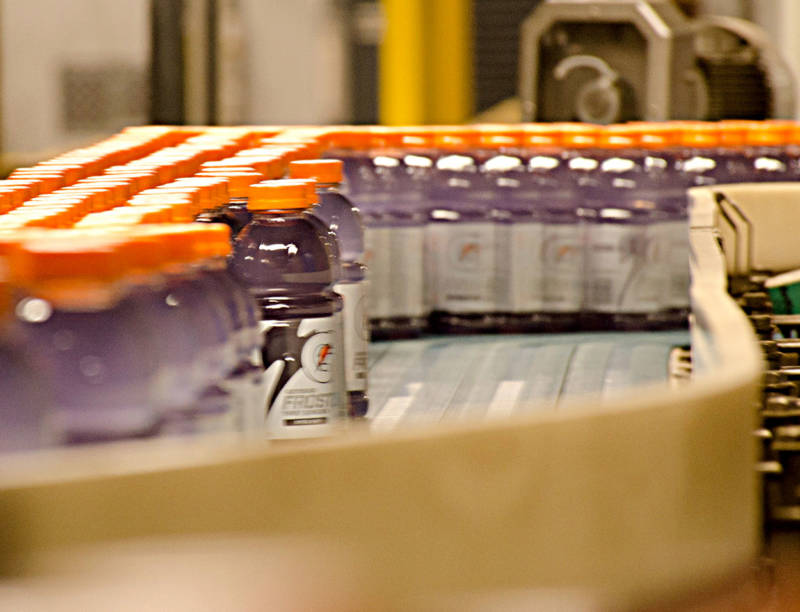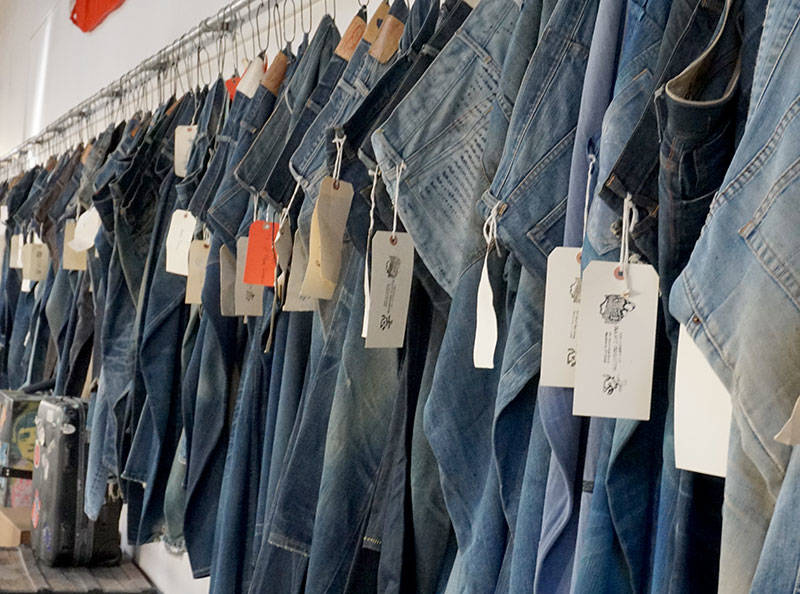The Water in Your Jeans: How Two Consumer Products Giants Are Cutting Back on Water Use
Archived series ("HTTP Redirect" status)
Replaced by: ww2.kqed.org
When?
This feed was archived on March 02, 2018 03:48 (
Why? HTTP Redirect status. The feed permanently redirected to another series.
What now? If you were subscribed to this series when it was replaced, you will now be subscribed to the replacement series. This series will no longer be checked for updates. If you believe this to be in error, please check if the publisher's feed link below is valid and contact support to request the feed be restored or if you have any other concerns about this.
Manage episode 195796234 series 1538408
Here’s a sobering thought:
“Studies have shown that as we look out to 2030, global demand for water is expected to outstrip supply by 40 percent.”
So says Brooke Barton with CERES, a Boston-based non-profit that helps businesses build sustainability into their work, including water conservation.
Right now, that’s a challenge that’s just not on the radar of a lot of companies.
“It’s surprising how many companies and manufacturing facilities around the world aren’t even measuring how much water they use,” Barton says.
CERES is trying to change that, by tracking food companies’ progress using less water, and by appealing to their self-interest; tracking and cutting water use can save corporations a lot of money.
Barton says that message is getting through.
“What we’re seeing is a growing cadre of companies who are shifting direction and elevating this as a priority in their business,” says Barton, who highlighted Levi’s and PepsiCo as two examples of corporate leaders in water conservation.
PepsiCo produces many types of beverages – including Gatorade – as well as many types of chips like Cheetos, Ruffles, and Tostitos. At a massive Gatorade facility just outside of Phoenix, in the city of Tolleson, Arizona, bottling lines fill 600 containers per minute.
“We’re doing grape, we’re doing fruit punch, we’re doing lemon lime,” says Tim Carey, who directs sustainability programs for PepsiCo Beverages in North America.
Carey says the company started investing in water efficiency four years ago in water-scarce Arizona. Since then, they’ve seen a 24 percent reduction in water use.

“That’s about a hundred million gallons of water that were used in 2013 every year that we do not use this year,” says Carey.
That translates into $1.5 million of annual cost savings, music to the ears of Carey’s corporate bosses.
So, how’d Pepsi do it? It starts with cleaning all those empty bottles. Water is out; air is in. Pulses of air remove dust particles from sterilized bottles.
Another water-saving step: more efficient filtering of the water used in Gatorade.
“Originally we would just do a single pass-through, reverse osmosis. We’d use the clean water in our operation and the rest would go to drain,” says Carey.
That water is now re-captured and cleaned again. Previously, Pepsi recovered 80 percent of the water used here; now they recover 87 percent.
Water and Power
Pepsi’s next trick can be found on the rooftop. Carey opens a hatch and emerges into the bright Arizona sun. “On top of this roof we have a field of solar panels that covers about 700,000 square feet,” says Carey.
That’s like 12 football fields.
But just what do solar panels have to do with saving water? It goes back to the local utility. Most power plants use tremendous amounts of water to generate electricity, boiling water to create steam or using water as a coolant. The less power Pepsi draws from the grid, the less water is used at the power plant.
“And because we’re all in the same watershed, we’re saving water in Arizona in the watershed that supplies us,” says Carey.
That, in turn, helps maintain the long-term viability of Pepsi’s operations in Tolleson. Pepsi is also working with The Nature Conservancy in Arizona and elsewhere, experimenting with ways to replenish local watersheds.
Beyond Arizona, Pepsi has set a goal to reduce its water use an additional 25 percent by 2025 (compared to 2015) at all its food and beverage facilities worldwide. By that same year, the company plans to replenish 100 percent of the water it uses in manufacturing operations in high-risk water areas.
Pepsi may be leading the way, but what it’s doing isn’t exactly splitting the atom. So why are corporations like PepsiCo just making these changes now? Why weren’t these things done 25 years ago?
Carey says water has long been cheap and CEO’s just didn’t think about sustainability as a business advantage.
“People didn’t say, ‘Oh what can I do to save water?’ she says. “Second thing is they probably did what I call ‘the gross stuff.’ They did the big water savings projects, which were fairly obvious. We’re at the precision scale now where we say: How can we tune our operations? How can we buy equipment and make it operate just perfectly?”
The challenges will be different for just about every plant, in just about every industry, but more companies are at least asking the questions.
Wet Jeans
Consider Levi’s, where, strange as it might seem, water is a main ingredient for blue jeans.
“This team is charged with coming up with new techniques every day,” says Bart Sights, who runs Levi Strauss & Co.’s “Eureka” lab near downtown San Francisco. “It’s time, temperature, pressure, mixture…”
The lab is a miniature factory at the forefront of denim technology. Hundreds of pairs of prototypes are stacked along the walls.

“Each jean has a recipe,” he says. “It’s very similar to cooking.”
Jeans all start out with the same basic ingredient: dark denim fabric.
“Up until forty years or so ago, jeans were sold like this,” Sights says. “They were stiff and scratchy.”
Today, consumers choose from a huge variety: light, dark, faded, pre-shrunk, stone-washed. And those variations are created with water.
The lab has several rows of washing machines, but at a full-scale Levi’s factory, each machine washes 300 pairs of jeans at a time. To get the right color and texture, some jeans are washed over and over, which uses a lot of water.
So a few years ago, the company developed machines that use ozone gas instead.
“It reduces the color from something dark to something light without using very much water at all,” he says.
Levi Strauss has developed about a dozen other waterless techniques with the goal to use them in 80 percent of its products by 2020. That means rolling them out to factories around the world, from Egypt to Mexico.
The company hasn’t quantified how much water it plans to save but so far, it reports having saved more than 200 million gallons.
“To use less water is usually less expensive,” Sights says. “Especially in some areas where we produce, [where] water is a challenge. Water is a premium.”
Thirsty Crop
Of course, most of the water in your jeans comes from growing the cotton itself, a notoriously thirsty crop. Levi’s doesn’t grow it, but is working on ways to reduce that water demand too, including sourcing fabric from the Better Cotton Initiative, which works with farmers to reduce water use.
Then there’s all the water that jeans use after we buy them, which makes up about a quarter of their total water footprint. Levi’s has found that Americans use more water to wash our jeans than consumers in Europe or China.
Among hard-core lovers of 501s, there is a movement to never wash their jeans, to develop a personalized patina.
“[For] true connoisseurs and aficionados, it’s the ultimate form of self-expression for people,” Sights says. “I never wash my jeans. Ever.”
But for everyone else, Sights has an easier option.
“If we could just convince people in America to wash their jeans only every five times they wear them, that would move the needle.”
16 episodes




